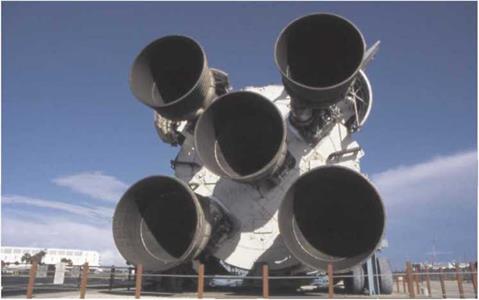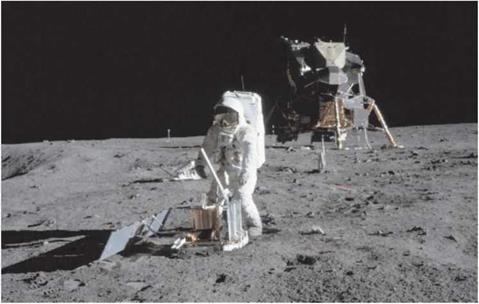Acknowledgements
One day in 2003,1 said to prolific author David Harland that there was one book in me waiting to get out. "Right," he said, "and it’s my job to get it out of you.’’ Before I knew what was happening. I had started putting down what I had learned about the Apollo flights and, slowly, this book began to take form. I hope David likes what I produced, and I greatly acknowledge his wisdom, advice and support throughout the process.
I am particularly grateful to Clive Horwood and all at Praxis Publishing, and Maury Solomon at Springer for not only taking this project on when I had never previously delved into the world of book writing, but also for considering it worthy of a second edition. I also thank Alex Whyte for his copy editing work on the first edition and David Harland for his work on this new and expanded edition.
Over the past decade, as I probed deeper and deeper into how Apollo worked, I came across many other people who are all part of a loose group in society who. like me, watched the dream of Apollo being fulfilled as impressionable children, trie Jones was pivotal in bringing the depth of Apollo to a much wider audience through his unmatched Apollo Lunar Surface Journal. This journal is simply the best Apollo resource available, largely due to trie’s boundless generosity. We all owe him a huge debt of gratitude.
When 1 took my idea of an ‘Apollo Flight Journal’ to trie, he wisely pul me in touch with Apollo computer expert and self-proclaimed ‘geek’, Frank O’Brien. Frank was a little sceptical of the value of the AFJ at first, but soon changed his mind as we discovered the many layers of complexity that went into an Apollo flight. Frank’s knowledge is vast and deep, and I could never have penetrated Apollo’s subilcty without his guidance.
While writing this book, I leaned on others for advice, feedback and resources. In particular, I’d like to thank fellow Apollo students Tim Brandt, Ken MacTaggart, Lcnnie Waugh and Scott Schneeweis for comments and suggestions. Scott was also kind enough to supply photographs of items from his comprehensive collection of Apollo hardware.
In my professional life in TV broadcasting, I work among people who combine technical ability with creativity. Some have had to put up with me for years rabbiting
on about the Moon and Apollo. Л long time ago. Hedda MacLeod made it clear to me that she believed that I really ought to write a book and it is Hedda I thank for planting the seed that really made me think it in the realms of possibility. Some of my colleagues agreed to become guinea pigs, reading drafts and guiding me where I was going. I am therefore grateful to Martin MaeK. eny. ie and Ken Stirling for their feedback. With my cover, I wanted to hark back to the nuts-and-bolts science fiction I grew up with, where a flight to the Moon was a fantastic, futuristic promise. 1 also wanted to indicate to a prospective reader that the book’s contents would not be overly technical and I am grateful to Stew-art Ramsay for realising my vision for this edition.
I w’ould also like to thank my sister. Hilda Harvey, for her advice, feedback and encouragement. Hilda is no space geek but, while reading my drafts, she made me believe that the book could be made amenable to the wider public. In a similar vein, I am proud to mention my lovely wife, Anne, and my two wonderful sons. Stephen and Kevin, who were always there as sounding boards when I struggled for words and phrases and who read the text for me throughout our proofreading. My parents, Allan and Violet, always fostered my interest in space and spaceflight, buying their young son a telescope and sending me on astronomy courses. To them and all my sisters. I send love and thanks. I would also like to thank John Lightbody for his drawings that accompany my explanations of orbits and the state vector.
For me, Apollo 15 commander David Scott is the epitome of the Apollo lunar explorer. He has also been incredibly generous to those who have been compiling the Apollo journals. I am hugely grateful to him for his support throughout and for contributing the Foreword to this book. Other Apollo participants who were generous with their talcs over the years include astronauts A1 Worden and Jim Lovell; and members of mission control Gerry Griffin, Sy Liebergot and Chuck Dcilerich. Thanks also go to Stephen Garber and the staff at NASA’s History Division. For over a decade. Stephen has always been greatly supportive of the Apollo Flight Journal, upon which this book is based.
Among the justifications for producing a second edition was feedback from readers who pointed out occasional errors in the first edition or who provided me with a deeper understanding of various issues. In this respect. I am grateful to LM computer expert Don Eyles who shared his astonishing tales of the cutting edge of computer technology in spaceflight. Also to Jim Scotti for his input. Additionally I felt that I should expand the book with details of the surface exploration of the Moon and for my research, there was no better material than Eric Jones’ ALSJ and, once again, I am in Eric’s debt for this wonderful resource.
The majority of pictures that I have used in this book are courtesy of NASA and all effort has been made to determine the copyright owners for other images. In those few cases where this was difficult. 1 have used the images anyway owing to their historic importance, and relevant copyright owners should contact me and I will be pleased to give due credit in later editions.
Any errors in the book are my own but if any are spotted, please pass them to me via my publisher or the book’s website, w-ww-.hafttm. com. They will be considered in the event of a reprint or new edition.














 The orientation of the Saturn as it sat on the pad, and indeed the orientation of the pad itself, was not haphazard. It had been carefully thought out prior to being built. Each pad was aligned to the cardinal points of direction, with the flame trench aligned exactly north-south. The launch vehicle was brought to it with its umbilical tower to the north. From here, the most efficient heading was to fly directly to the east, so the rocket was presented with the spacecraft’s hatch also facing east. This way, when the rocket ascended, tilted over and entered orbit, it did so with the spacecraft windows essentially facing Earth and its navigation optics facing out into space.
The orientation of the Saturn as it sat on the pad, and indeed the orientation of the pad itself, was not haphazard. It had been carefully thought out prior to being built. Each pad was aligned to the cardinal points of direction, with the flame trench aligned exactly north-south. The launch vehicle was brought to it with its umbilical tower to the north. From here, the most efficient heading was to fly directly to the east, so the rocket was presented with the spacecraft’s hatch also facing east. This way, when the rocket ascended, tilted over and entered orbit, it did so with the spacecraft windows essentially facing Earth and its navigation optics facing out into space.
 During Apollo, colour television was still in its infancy and was still viewed as notoriously complicated technology. Conventional colour TV cameras of the time used at least three imaging tubes to generate simultaneous images in red, blue and green. The cameras were therefore large, heavy and required constant attention to keep the three images aligned in the final camera output. A simpler system was required and designers turned to a derivative of one of the earliest methods of generating colour TV, the colour wheel.
During Apollo, colour television was still in its infancy and was still viewed as notoriously complicated technology. Conventional colour TV cameras of the time used at least three imaging tubes to generate simultaneous images in red, blue and green. The cameras were therefore large, heavy and required constant attention to keep the three images aligned in the final camera output. A simpler system was required and designers turned to a derivative of one of the earliest methods of generating colour TV, the colour wheel.
